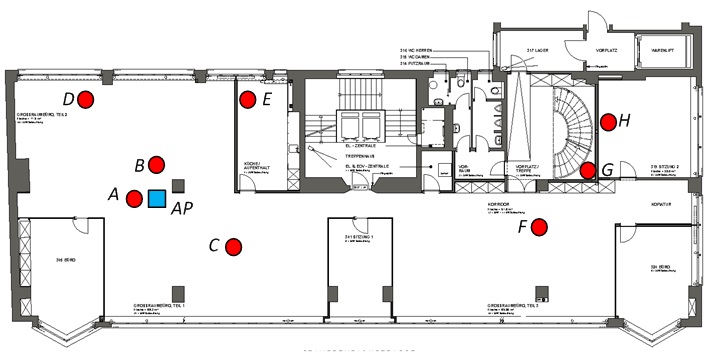Abstract

We present a thorough and extensive experimental performance characterization of the achievable data throughput, jitter, and fairness of the IEEE 802.11ac standard for indoor Wireless Local Area Networks (WLANs) using real testbed deployments and statistical analysis. 802.11ac achieves higher throughput by incorporating wider channels, more spatial streams, and denser modulation compared to the 802.11n standard. Through diverse testbed experiments, we use multiple linear regression to gain insights on the influence of individual 802.11ac features and of their combinations on network performance and fairness for various link and interference scenarios. We further show that 802.11ac WLANs with wider channels can be fairer compared to 802.11a/n in dense environments with high interference.
Copyright Notice
The documents contained in these directories are included by the contributing authors as a means to ensure timely dissemination of scholarly and technical work on a non-commercial basis. Copyright and all rights therein are maintained by the authors or by other copyright holders, notwithstanding that they have offered their works here electronically. It is understood that all persons copying this information will adhere to the terms and constraints invoked by each author’s copyright. These works may not be reposted without the explicit permission of the copyright holder.